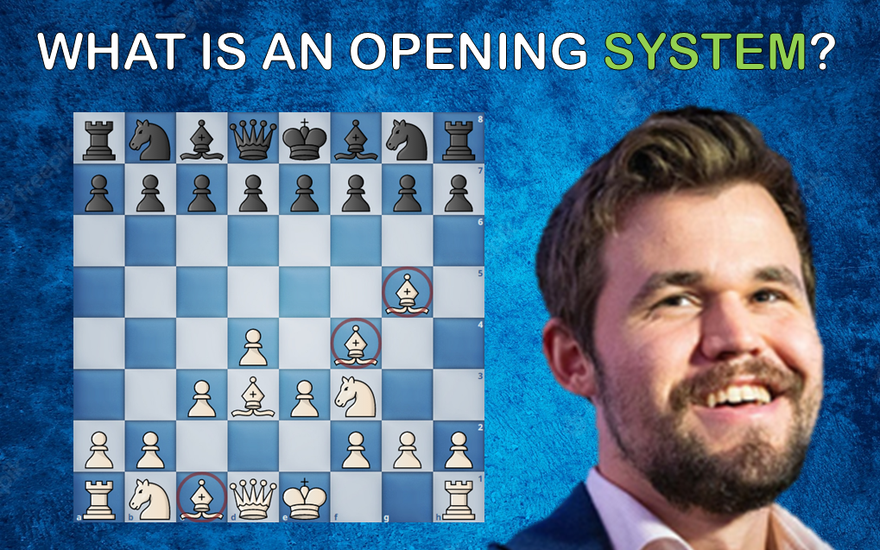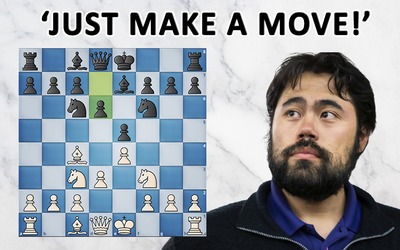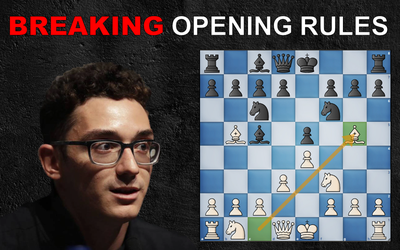
The Lazy Man's Guide to Openings
The easy way to survive the openingEdit: thanks to Lichess for featuring this post in the homepage, I'm happy many players found it useful. Let me know if you want to read about another topic by sending me a message (https://lichess.org/inbox/juancruzariastdf) and I'll try to write a blog post on it!
What is an opening system?
An opening system is a regular series of moves to develop the pieces in the opening. The main difference with typical openings is that we can make such a series of moves without paying much attention to what our opponent is doing. A certain formation of pieces and pawns is memorized, and in most games, it is possible to build that standard formation and complete your development. In fact, it is generally to the benefit of the system player for the opponent to try to prevent the system from being formed, as he often incurs excessive risk that way.
Popular opening systems
The London system
Perhaps the opening system whose popularity has grown the most in recent years. The London system is part of a set of fixed central structure systems of 1.d4, where White rapidly develops the dark-squared bishop to f4 and usually reinforces this center with c3 and e3 rather than expanding.
The Torre Attack
This system is similar to London, with the difference being the development of the dark squared bishop on g5. It is especially effective when Black plays the pawn to e6.
The Stonewall Dutch
Derived from the Dutch Defense, this system is much more aggressive than the previous ones, but at the same time it grants notorious weaknesses that black can take advantage of, like the underdevelopment of the bishop on c1 and the e4 square. It is considered a dubious system, which allows Black to fight for an advantage with numerous plans, among which the typical central break with d6 and e5 stands out. It is highly effective if the opponent does not perceive the danger and castles short quickly without fighting for the e5 square. Finally, it should be noted that transposing to the Stonewall structure is an interesting attacking resource in the other queen pawn systems.
The Colle System
This system differs from the previous ones in that the c1-bishop stays there, and White generally doesn't fight so directly for the e5-square, but rather tries to liberate the position via the break with e3-e4. It bears a marked similarity to the Semi-Slav Defense (with inverted colors).
The Zukertort / Rubinstein / Yusupov system
A Colle system where the bishop on c1 is developed by b2. It is one of the systems that lends itself the most to dynamic play, since White should eventually play c4 generating tension in the center.
King's Indian Attack / King's Indian Defense
Played schematically, it can be considered with both White and Black as one of the oldest and most popular opening systems in chess. The kingside is fortified with the fianchetto of a now powerful bishop on the long diagonal, in exchange for giving space in the center, where the fight will later take place.
Botvinnik system
Designed by Mikhail Botvinnik, this solid and safe system is part of the English Opening. Although it shares similarities with the Stonewall (strategic concessions in exchange for space and good positioning of the pieces) it is considered to be of higher quality and has been tested at the highest level with the white and black pieces.
Vienna / Glek / Geloso System
Equivalent to playing a Botvinnik system without c4, which gives White more development time to gain an initiative on the kingside in exchange for giving up space in the center.
Hippopotamus system
The flexible system par excellence, perhaps only comparable to the hedgehog formation (a pseudo-system). All the minor pieces are developed behind the third rank, in preparation for a big central fight that will take place in the middlegame. It is extremely difficult for the opponent to convert the space advantage tactically because there are no obvious weaknesses or easy contact points (as with any hippo).
Pros and cons of playing systems
The most frequently mentioned valuations include:
PRO: Reduces opening study time considerably.
PRO: It allows to take the tension directly to the middlegame, without the moves having a high cost in the opening.
PRO: Typical midgame plans are similar no matter what the opponent does.
CON: They lead to simple positions, which takes away from the tactical edge of the player who uses them.
CON: Stagnates player development after a certain time, as other types of positions are not explored
However, one of the few scientific reviews of how to improve at chess, based on template theory, makes extremely interesting recommendations in this regard:
"Several practical recommendations may be inferred from the theory. First, one should focus on a limited number of types of positions and openings, and learn the various methods in these positions thoroughly. This focus is necessary due to the limited study time available and to the wealth of information to learn. As discussed below, this focus also facilitates access to the information through pattern recognition."
[Excerpt from page 9. Full text: http://chrest.info/fg/preprints/Training_in_chess.PDF. It is worth clarifying that in this excerpt, the article is making recommendations aimed at players with more than 1800 ELO FIDE who are looking to reach 2400 FIDE.]
So far for today's blog, thanks for your attention, I hope this information will help you learn a little more about chess, and maybe even decide whether to play a system or not (and which one).
Cheers!
Juan Cruz
More blog posts by juancruzariasTDF

How To Stop Running Out Of Time
The psychology behind time trouble
Opening Principles and How To Break Them
The typical opening mistakes
Why Solving Tactics Can Hurt Your Calculation
How not to solve tactical puzzles